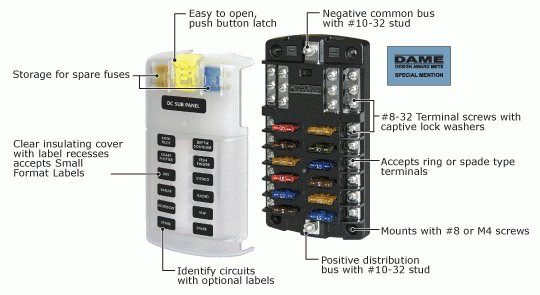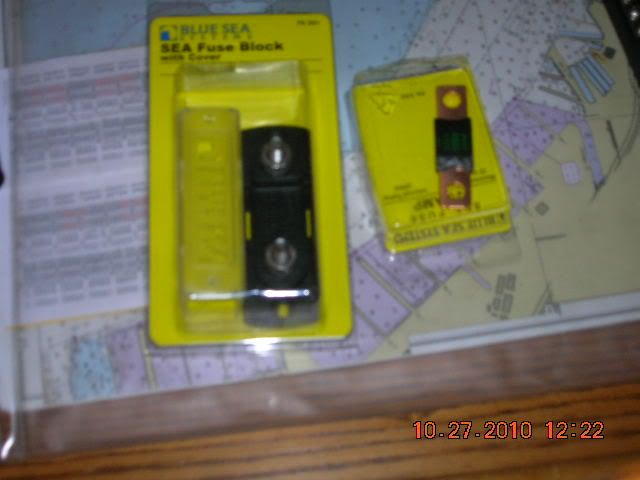Got a question about the cable size to the 150 amp fuse block.
Am ready to purchase the two cables, positive and negative for the 150 amp fuse block.
The fuse block is 14' to the neg buss and then it is a couple feet to the battery. So say it is 17' to the battery negative side.
Neg 17'
The positive cable is 11 ½ feet and a fey to the battery from the buss so say 15'.
Neg 17'
Pos 15'
At genuinedealz.com on the calculator for wire size it says "one way".
Genuinedealz - Technical - Calculators
17'
12 VDC 1 phase
3 percent drop
= 4/0 cable!
So that would mean I would take the longest run the neg at 17' and calculate for a 3 percent drop, as I am on the cautious side. This fuse block will handle the VHF, SSB, bilge alarm, propane detector and some other devices.
So at that length 17' and 3 percent drop I get 4/0 cable. That seems real big.
The fuse block only has a ¼ stud for hooking a cable to.
If I go to a 10 percent drop for non critical stuff I get 2 awg.
So my question is what am I doing wrong if anything?
Does the fuse block really need to handle 150 amps?
Should I be adding both wires together?
There is a 125 amp fuse for the fuse block then the fuse block.
![Image]()
![Image]()
Am ready to purchase the two cables, positive and negative for the 150 amp fuse block.
The fuse block is 14' to the neg buss and then it is a couple feet to the battery. So say it is 17' to the battery negative side.
Neg 17'
The positive cable is 11 ½ feet and a fey to the battery from the buss so say 15'.
Neg 17'
Pos 15'
At genuinedealz.com on the calculator for wire size it says "one way".
Genuinedealz - Technical - Calculators
17'
12 VDC 1 phase
3 percent drop
= 4/0 cable!
So that would mean I would take the longest run the neg at 17' and calculate for a 3 percent drop, as I am on the cautious side. This fuse block will handle the VHF, SSB, bilge alarm, propane detector and some other devices.
So at that length 17' and 3 percent drop I get 4/0 cable. That seems real big.
The fuse block only has a ¼ stud for hooking a cable to.
If I go to a 10 percent drop for non critical stuff I get 2 awg.
So my question is what am I doing wrong if anything?
Does the fuse block really need to handle 150 amps?
Should I be adding both wires together?
There is a 125 amp fuse for the fuse block then the fuse block.






